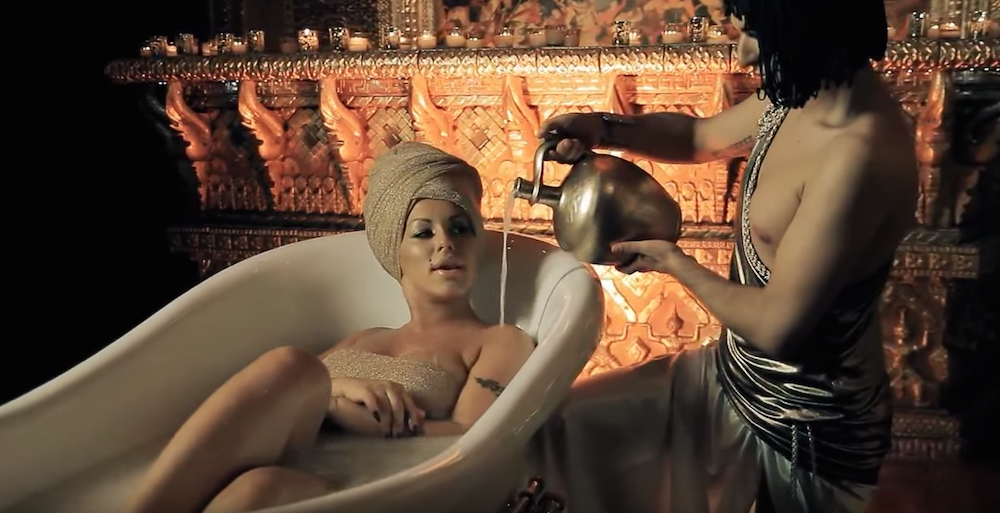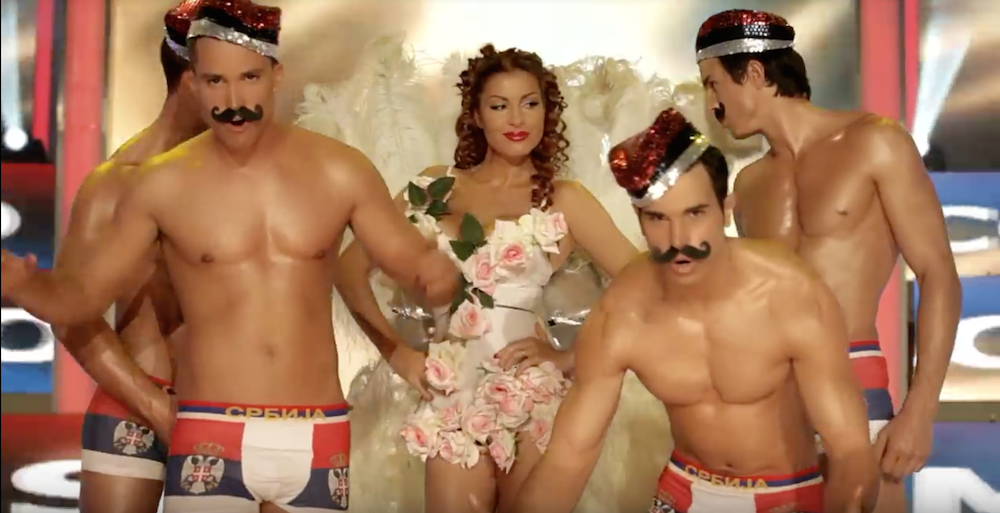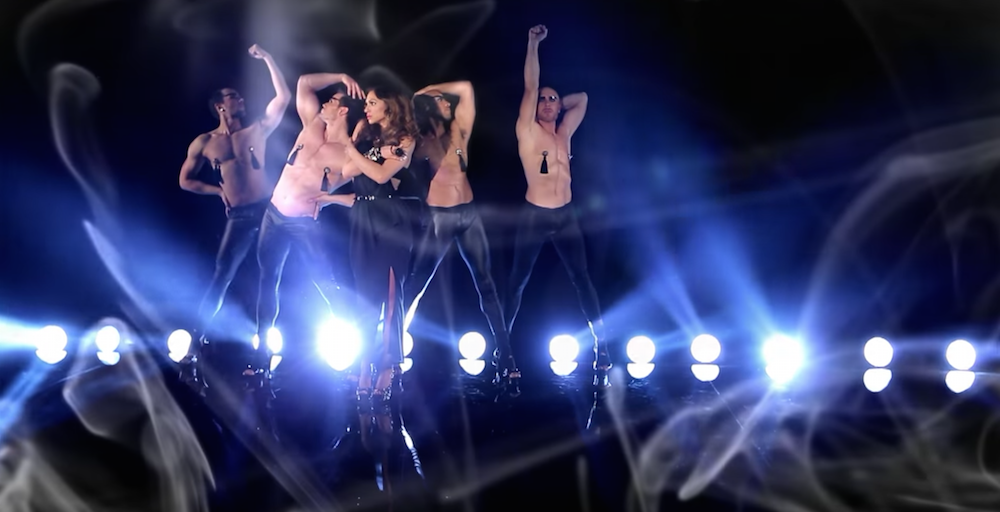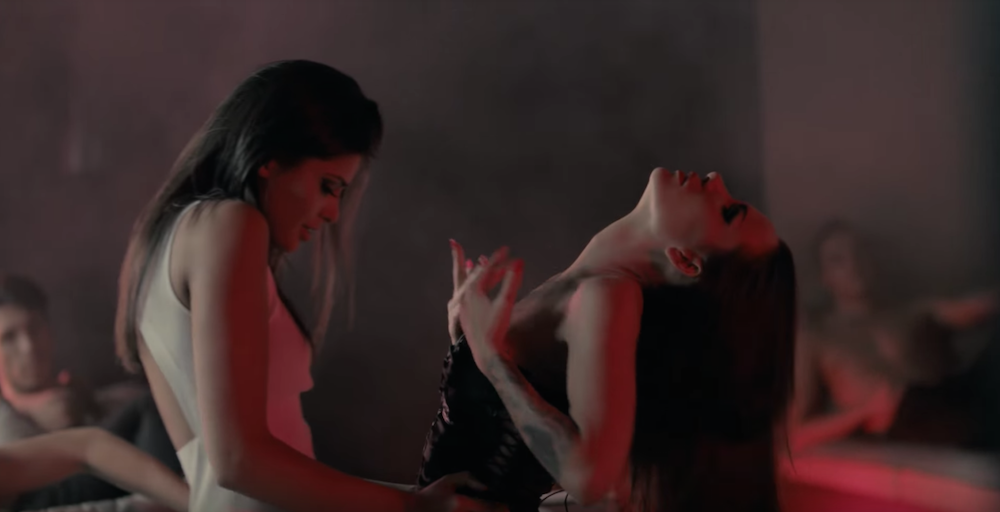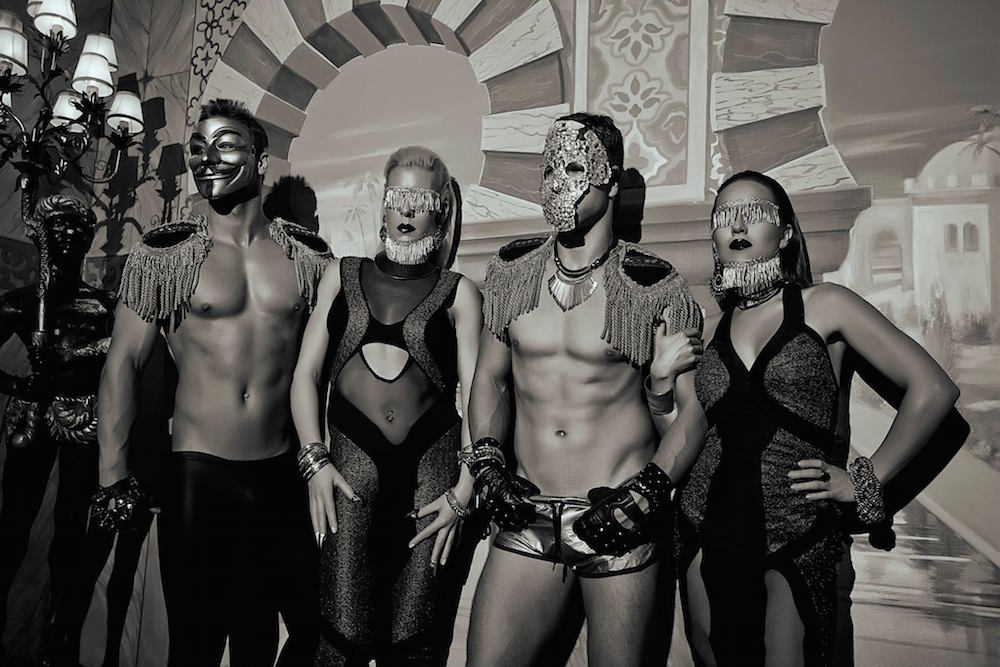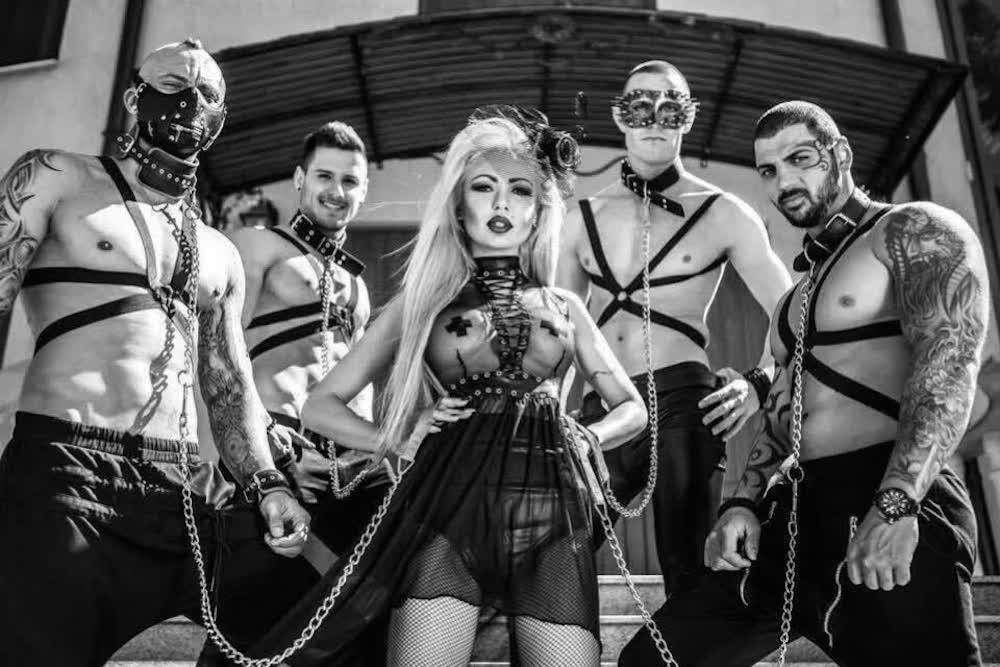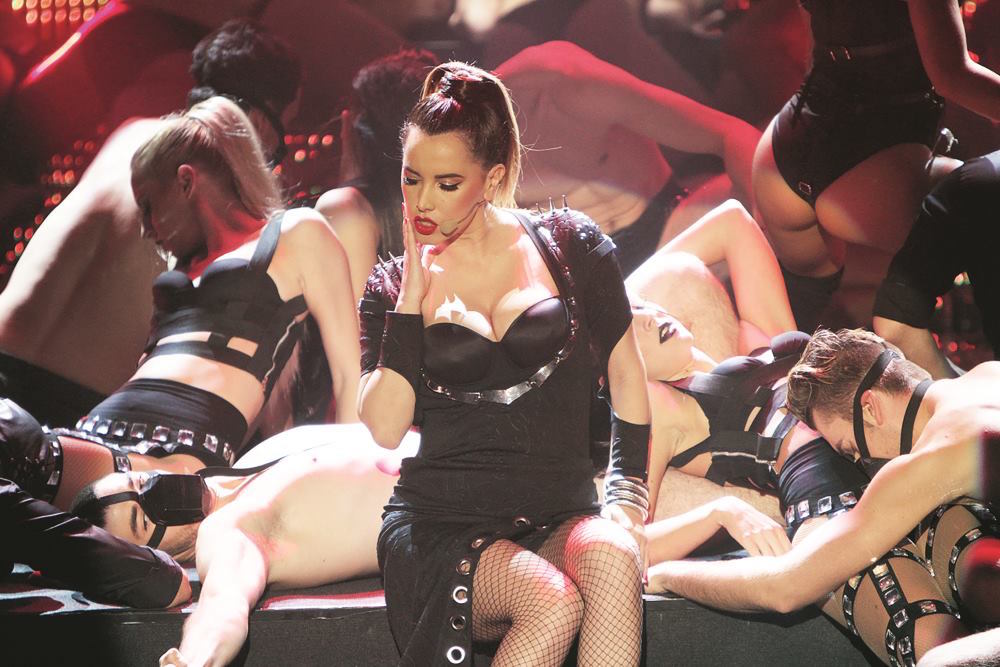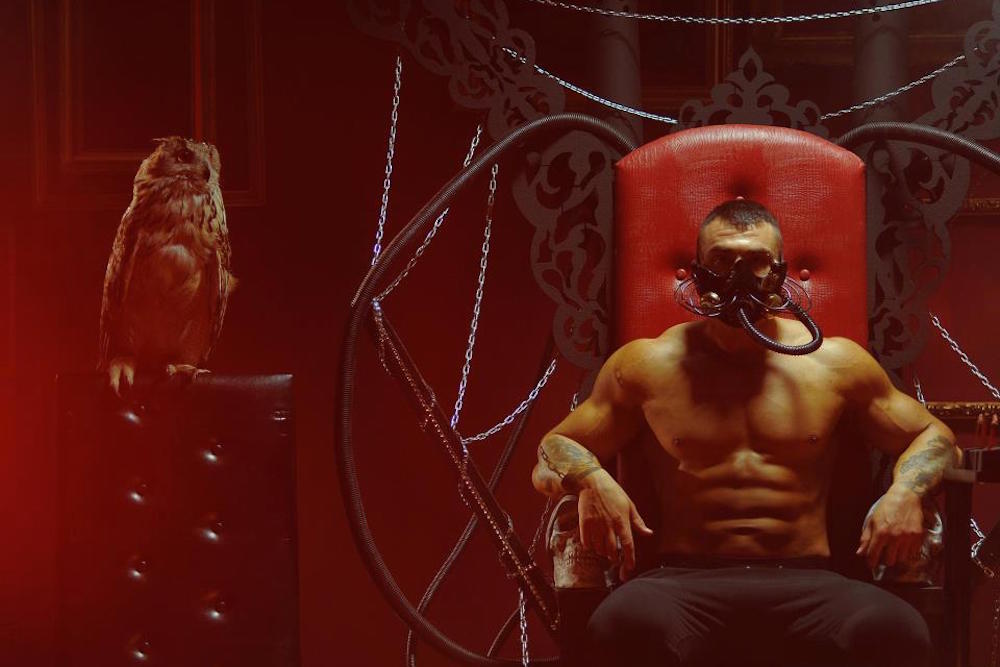Turbofolk: how Serbia’s outrageous pop music brought gay desire to the mainstream
Serbia’s gloriously garish pop culture flies in the face of stereotypes of the Balkans as regressive and homophobic
Serbia’s hugely popular pop-folk genre has transformed since the millennium: where in the 90s it was tied up with nationalists and gangsters, now turbofolk provides a welcome release for the young, women and marginalised communities across the ex-Yugoslav diaspora.
And in the past decade or so, it’s become gayer than ever. Indeed, the queer side of Serbian pop culture is pretty hard to miss when music videos, performances and concerts spill over with oiled-up orange muscle men, fierce divas, flamboyant drag performances and even rainbow flags, all to a soundtrack of sick synths and thundering club beats. Belgrade’s most prolific and successful music video director, Dejan Milićević, whose work over the past 15 years shaped the genre’s entire look, is openly gay; it’s not just in the West that gay men, historically shut out of other spaces, find a natural home for themselves in the entertainment industry.
“Eastern Europe is homophobic!” goes the chorus from the West (often hand in hand with “Eastern Europe is racist”), from people who may not even have been there and are prone to view the region as a monolithic, undifferentiated whole. And while it’s true that LGBTQ people are worse off legally and in many cases socially in the eastern half of our continent, something I by no means wish to trivialise, this strictly binary view ignores all kinds of nuances and differences on the ground, while not-so-subtly positing western Europe as a rainbow paradise (“We’re civilised here, we even let our gays get married and appear on television, not like those backward peasants”).
While western music videos bombard us with images of semi-dressed nubile young women on a daily basis, their Serbian counterparts feature just as many scantily clad men as women, if not more. Contemporary Serbian pop-folk is a veritable homoerotic fantasy land, pioneered in full mainstream view by gay male directors and creatives, where divas call the shots, male objectification is endemic and queerness is often more a text than a subtext. Many of the genre’s biggest female stars since the millennium — from Jelena Karleuša to Goga Sekulić, Nikolija to Ana Nikolić — are simultaneously hyperfeminine and hypermasculine: dominant, uncompromising personalities wielding sexual and social power on screen and stage. Their music videos frequently feature them with hosts of scantily clad men at their beck and call, like a Balkan subversion of US hiphop videos where male rappers are surrounded by available female bodies.
Contemporary Serbian pop-folk is a veritable homoerotic fantasy land, pioneered in full mainstream view by gay male directors and creatives, where divas call the shots and male objectification is endemic
In Dejan Milićević’s clips for Seka Aleksić’s hits There Where You Are (Tamo gde si ti) and Room 22 (Soba 22), not a single man is afforded the dignity of a shirt. In the former video, a sultry Seka marauds through what appears to be a fantasy version of a men’s steam room, inspecting a row of anonymous male bodies. In the latter, a regal Seka enjoys a milk bath while being attended to by hunky male servants wearing eyeliner. Both videos boast an unmistakably gay aesthetic. The same can be said of Milićević’s video for dance track Male Doll (Muška lutka), in which singer Goga Sekulić paws at a coterie of male models clad only in briefs.
One of the queerest turbofolk videos starring a female artist is 2013’s Label (Etiketa), in which singer Ljupka Stević is backed by four shirtless male dancers wearing high heels, nipple tassels and rubber tights. In the second half of the clip, Ljupka becomes literally entangled with her androgynous male twin — a male model styled to look just like her. The gender-bending on display reflects the song’s lyrical theme of how, when a relationship ends, we leave part of ourselves in the other person. Released a few months earlier and by the same director, Mia Borisavljević’s Groove, Groove (Gruva Gruva) features a bunch of buff young male models sprayed orange and decked out in Serbian-flag boxer-briefs, fake moustaches and sequined caps. Perhaps more than any other, this video shows how comfortable the genre is with male objectification. The aesthetic is unmistakably gay, and yet the video plays with, subverts and reappropriates tropes of national identity, explicitly recasting the country as one where men are sex objects and women pull the strings. Post-Ottoman kitsch doesn’t get much better than this.
In the 2014 music video for What Will You Do After Me (Kako posle mene), singer Nikolija rejects a handsome young businessman in favour of a female love interest. Musically, the track’s main hook is a repeated motif played on the zurna, an Ottoman instrument more commonly heard in Bulgarian pop-folk. Nikolija’s earlier video for Ćao zdravo also features homoerotic and gender-bending themes, as she imperiously leads a group of women on leashes and lip-syncs to the male rapper’s segment, appearing instead of him.
The sensual clip for Daniel Djokić’s single Like It Like This, another Milićević production, is entirely focused on selling Daniel’s body as a sexual commodity. It’s near-impossible to imagine any straight-presenting western male pop star releasing a video like this that posits them so unequivocally as a piece of meat. The English lyrics to the chorus feel like a message from Serbia’s gay turbofolk community to the world: “This is the only time we’re ever gonna like it like this. There’s no money in our pocket but we like it like this. We have nothing but the music and we like it like this.”
In a more recent example, the 2016 video for Emina Jahović’s Romeo opens on a homoerotic gym scene full of bare-chested muscle men pumping iron. In the second half, the setting changes to something resembling the gay steel mill from The Simpsons, as beefy welders don hard hats and literally make the sparks fly. It’s almost as steamy as the homoerotic video for Orient 2525 by Belgrade-based Slovenian duo Clea & Kim, which was shot in Vienna’s largest gay sauna. There’s plenty more clips where these examples came from.
“I really believe that many of these songs are made by gay people. If not, why would they be so popular at gay places in Serbia?” says one of the young Belgrade gay clubbers interviewed by Marija Grujić for her 2009 PhD thesis on turbofolk in post-Yugoslav Serbia. Grujić notes that Serbian LGBTQ websites often feature positive discussions of the genre; her fieldwork in Belgrade and Novi Sad gay-friendly clubs and cafés revealed that turbofolk “was even [the] dominant music style in some.”
In a 2012 book chapter, another researcher, Rory Archer, outlines “the potential for the turbofolk scene to foster liberal, cosmopolitan sentiment” through the public statements of performers like Jelena Karleuša, Indira Radić and Seka Aleksić in favour of gay (and women’s) rights. After violence at the 2010 Belgrade Pride Parade, Karleuša wrote a “scathing” article for Serbian tabloid Kurir — “in Serbia it’s normal for a child to see its dad slap its mother, but it’s not normal for two grown-up people [of the same sex] to love each other,” as she put it. Archer notes that, as the first turbofolk singer to appear on the influential talk show Impression of the Week, Karleuša demonstrated that “the articulation of liberal views should not only be the preserve of intellectual elites in Serbia. By doing so Karleuša […] challenged the long-standing view of turbofolk performers as inert, conservative and depoliticised.”
Eastern Europe is often conceived as a dangerous, wild “other” in contrast to the “civilised” West — monolithically labelled as “homophobic”
The stage performance of Sweet Little Thing (Slatka Mala) from Karleuša’s 2010 concert DVD, shot in the packed Belgrade Arena, is the most explicitly pro-gay moment in turbofolk history. In a film on the arena’s video wall, Karleuša mouths the words “love and marriage” while removing a rainbow flag from a washing machine, intercut with shots of naked male dolls and soundtracked to an audio collage of gay-themed quotes. As Karleuša’s cries of “liberta” mix with techno synths and crescendo into a scream, a troop of male dancers dressed in sailor suits marches onto the stage waving rainbow flags to a military drumbeat, before Jelena emerges atop a giant pink cake being pushed by yet more sailors and chaperoned by four orange go-go boys dressed only in hotpants and angel wings. It’s not most people’s image of Serbia, to put it mildly — and I love how the washing machine sequence also allows Jelena to subvert patriarchal expectations of a woman’s role.
Grujić’s informants themselves let her know that they “highly appreciated” Karleuša’s “public contribution to gay visibility, even though it was put in the form of entertainment and not in some more official public debate.” In one TV appearance, the star said that if her hairdresser, stylist and make-up artist are gay, “it means that gay people are around us, so we have to get used to the fact that they are citizens like anybody else.”
Karleuša is not the only vocal turbofolk advocate. As well as featuring a gay kiss in her 2008 clip for Drink My Drink (Pije mi se pije) — the first in a Serbian music video — singer Indira Radić has stated her support for gay rights and told the press that, if her son were gay, she would support him (not an uncontroversial statement in Serbia in 2009). She has also commented that homophobic attitudes in Serbia echo the prejudice she has encountered as someone from a “peasant” background and as a folk performer, saying that purveyors of both homophobic and classist hate are “enslaving themselves to stereotypes”.
Alongside the academic likes of Archer and Grujić, Serbian cultural critic Vuksa Veličković agrees: “The multiple layers of meaning inscribed in turbo-folk today imply a necessary re-evaluation of the existing paradigms that regard it solely as the cultural embodiment of Serbian nationalist-authoritarianism.” This is not the 90s anymore.
Eastern Europe is often conceptually constructed as a dangerous, wild “other” in contrast to the “civilised” West, and the all-too-common labelling of the region as monolithically “homophobic” is reductive and shuts the door to open-minded engagement with these cultures’ nuanced realities. As turbofolk leaves its dark past behind, it is becoming ever more gender-inclusive and politically engaged. 21st-century turbofolk deserves to be discovered by an international audience, especially a gay one. Here’s to the continued blossoming of Serbian pop-folk’s bold queer aesthetic.
This article is a potted version of the Queer As Turbofolk series first published on Balkanist in 2014.
Text: eurovicious
